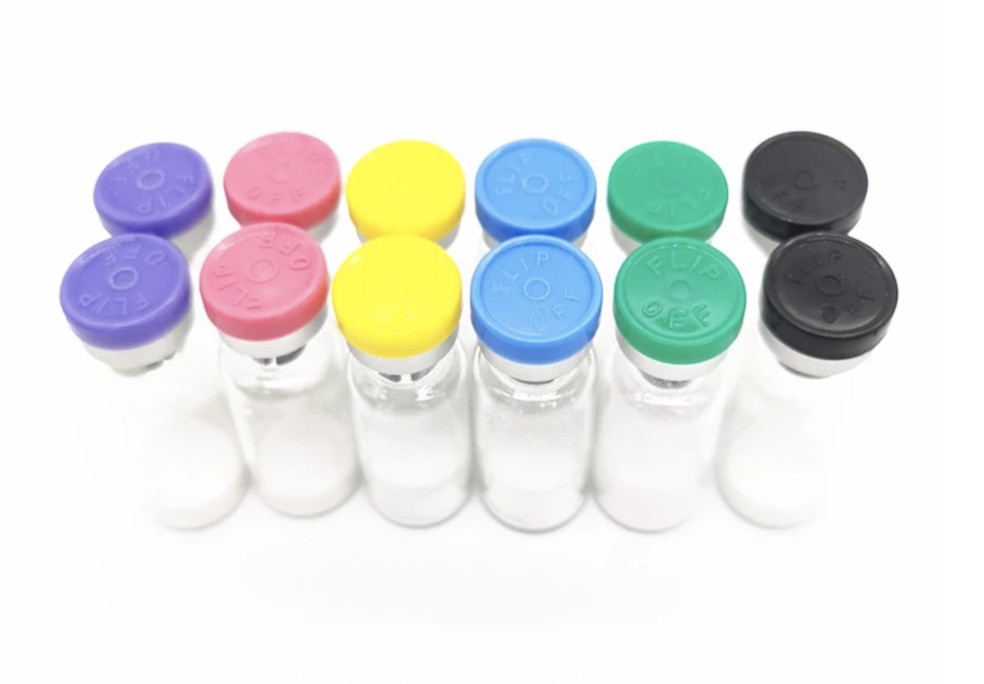Insulin-like growth factor 1 (IGF-1), also called somatomedin C, is a hormone similar in molecular structure to insulin which plays an important role in childhood growth, and has anabolic effects in adults.
IGF-1 is a protein that in humans is encoded by the IGF1 gene.IGF-1 consists of 70 amino acids in a single chain with three intramolecular disulfide bridges. IGF-1 has a molecular weight of 7,649 Daltons.In dogs, an ancient mutation in IGF1 is the primary cause of the toy phenotype.
IGF-1 is produced primarily by the liver. Production is stimulated by growth hormone (GH). Most of IGF-1 is bound to one of 6 binding proteins (IGF-BP). IGFBP-1 is regulated by insulin. IGF-1 is produced throughout life; the highest rates of IGF-1 production occur during the pubertal growth spurt.The lowest levels occur in infancy and old age.
A synthetic analog of IGF-1, mecasermin, is used in children for the treatment of growth failure.
IGF-1 is a primary mediator of the effects of growth hormone (GH). Growth hormone is made in the anterior pituitary gland, is released into the blood stream, and then stimulates the liver to produce IGF-1. IGF-1 then stimulates systemic body growth, and has growth-promoting effects on almost every cell in the body, especially skeletal muscle, cartilage, bone, foie, kidney, nerve, peau, hematopoietic, and lung cells. In addition to the insulin-like effects, IGF-1 can also regulate cellular DNA synthesis.
IGF-1 binds to at least two cell surface receptor tyrosine kinases: the IGF-1 receptor (IGF1R), and the insulin receptor. Its primary action is mediated by binding to its specific receptor, IGF1R, which is present on the surface of many cell types in many tissues. Binding to the IGF1R initiates intracellular signaling. IGF-1 is one of the most potent natural activators of the AKT signaling pathway, a stimulator of cell growth and proliferation, and a potent inhibitor of programmed cell death .The IGF-1 receptor seems to be the "physiologic" receptor because it binds IGF-1 with significantly higher affinity than insulin receptor does. IGF-1 activates the insulin receptor at approximately 0.1 times the potency of insulin. Part of this signaling may be via IGF1R/Insulin Receptor heterodimers (the reason for the confusion is that binding studies show that IGF1 binds the insulin receptor 100-fold less well than insulin, yet that does not correlate with the actual potency of IGF1 in vivo at inducing phosphorylation of the insulin receptor, and hypoglycemia).[medical citation needed]
IGF-1 binds and activates its own receptor, IGF-1R, through the cell surface expression of Receptor Tyrosine Kinase's (RTK's) and further signal through multiple intracellular transduction cascades. IGF-1R is the critical role-playing inducer in modulating the metabolic effects of IGF-1 for cellular senescence and survival. At a localized target cell, IGF-1R elicits the mediation of paracrine activity. After its activation the initiation of intracellular signaling occurs inducing a magnitude of signaling pathways. An important mechanistic pathway involved in mediating a cascade affect a key pathway regulated by phosphatidylinositol-3 kinase (PI3K) and its downstream partner, mTOR (mammalian Target of Rapamycin).Rapamycin binds with the enzyme FKBPP12 to inhibit the mTORC1 complex. mTORC2 remains unaffected and responds by up-regulating AKT, driving signals through the inhibited mTORC1. Phosphorylation of Eukaryotic translation initiation factor 4E (EIF4E) by mTOR suppresses the capacity of Eukaryotic translation initiation factor 4E-binding protein 1 (EIF4EBP1) to inhibit EIF4E and slow metabolism.A mutation in the signaling pathway PI3K-AKT-mTOR is a big factor in the formation of tumors found predominantly on skin, internal organs, and secondary lymph nodes (Kaposi sarcoma).IGF-1R allows the activation of these signaling pathways and subsequently regulates the cellular longevity and metabolic re-uptake of biogenic substances. A therapeutic approach targeting towards the reduction of such tumor collections could be induced by ganitumab. Ganitumab is a monoclonal antibody (mAb) directed antagonistically against IGF-1R. Ganitumab binds to IGF-1R, preventing binding of IGF-1 and the subsequent triggering of the PI3K-mTOR signaling pathway; inhibition of this pro-survival pathway may result in the inhibition of tumor cell expansion and the induction of tumor cell apoptosis.[citation requise]
Insulin-like growth factor 1 has been shown to bind and interact with all seven IGF-1 binding proteins (IGFBP): IGFBP1, IGFBP2, IGFBP3, IGFBP4, IGFBP5, IGFBP6, and IGFBP7.[medical citation needed] Some IGFBPs are inhibitory. Par exemple, both IGFBP-2 and IGFBP-5 bind IGF-1 at a higher affinity than it binds its receptor. Therefore, increases in serum levels of these two IGFBPs result in a decrease in IGF-1 activity.






















